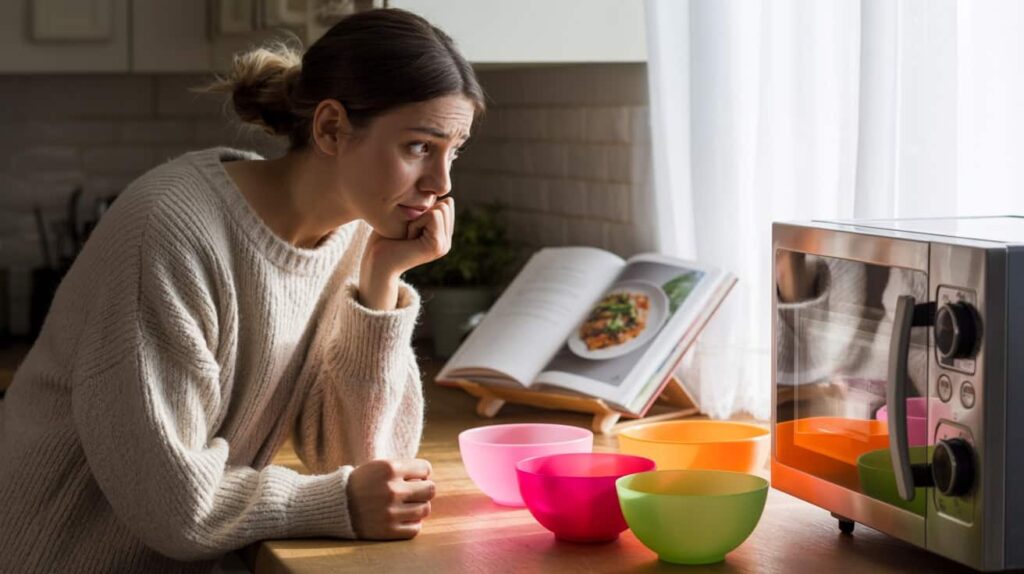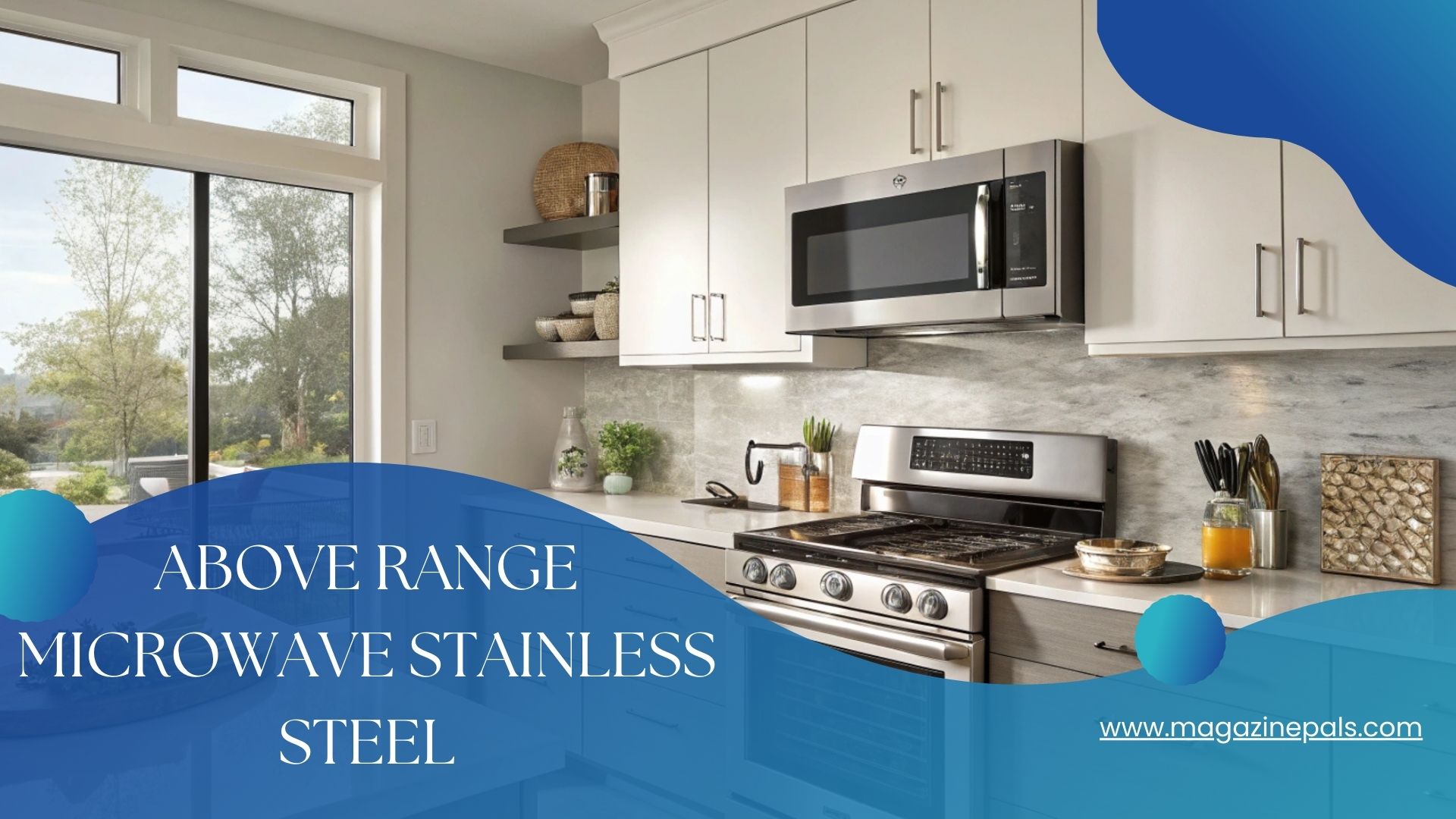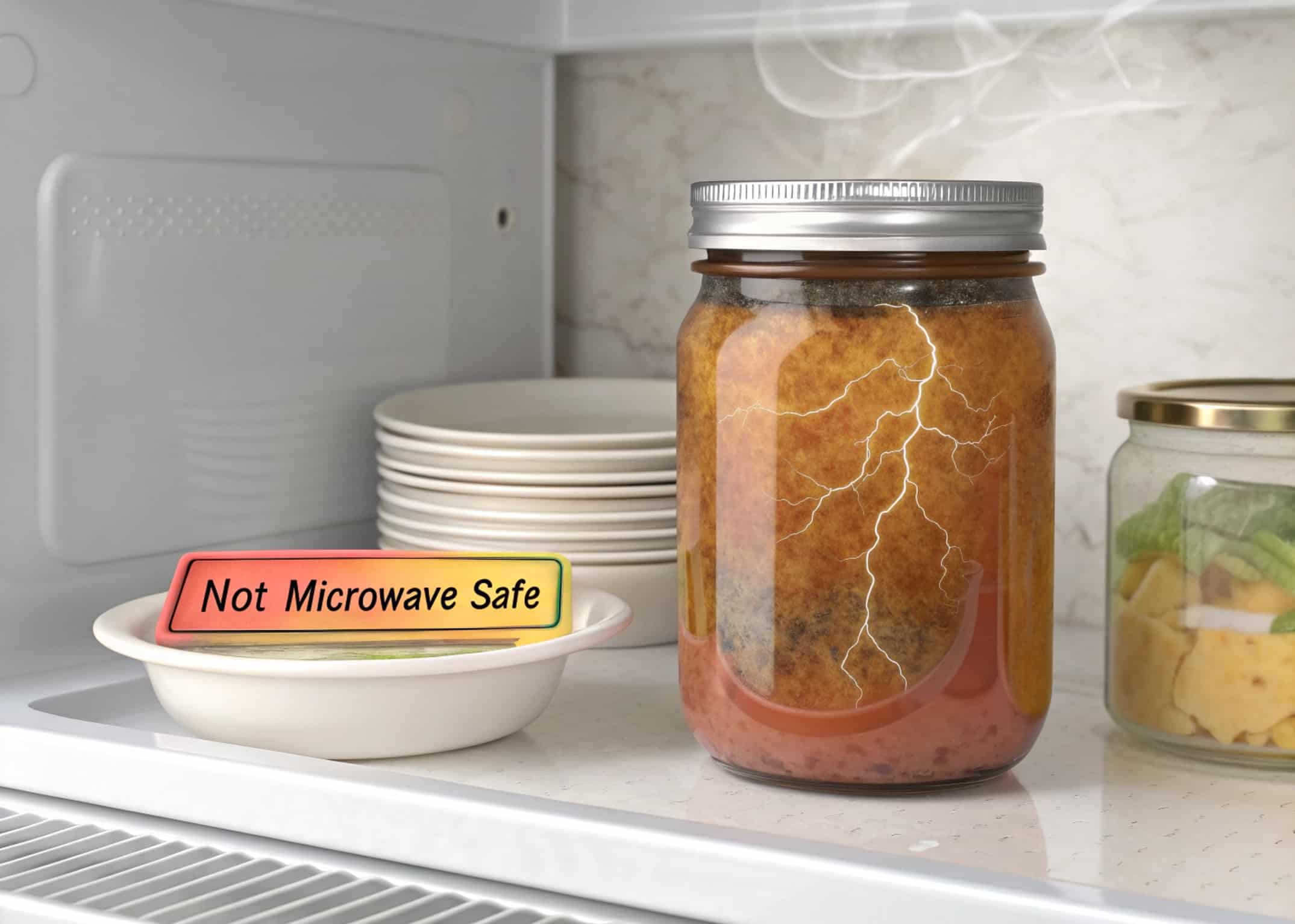Heating food in plastic bowls in the microwave is something many of us do without much thought. I used to do it all the time because plastic bowls are cheap, lightweight, and easy to use. They are perfect for storing and reheating leftovers. But after some time, I began to worry that this habit might be harmful to my health.
I started learning about the chemicals in plastic and how they can affect our bodies. It made me change my habits to protect myself and my family. In this article, I want to share my personal experience and explain what science says about heating food in plastic bowls. I will also give you some easy tips to stay safe while using plastics.
My Story with Plastic Bowls and Microwaves:

When I was younger, I always kept my food in plastic containers and heated it in the microwave. It was very convenient, especially when I was busy or in a hurry. Sometimes, I noticed a strange smell when the plastic got hot, but I thought it was normal.
Later, a friend told me about the possible dangers of heating food in plastic. He said that some plastics have chemicals that can get into the food when heated, and these chemicals might be bad for our health. That scared me, so I started reading more about it.
I learned that not all plastic bowls are safe to use in microwaves. Some plastics release harmful chemicals when heated. So, I changed my habits and started using safer containers for heating my food.
What Is Plastic Made Of?
- Bisphenol A (BPA): This chemical makes plastic hard and clear. It is often used in water bottles, food containers, and baby bottles. BPA can slowly leak into food or drinks, especially when heated, and may affect your hormones.
- Phthalates: These chemicals make plastic soft and flexible. You find them in plastic wraps, toys, and some food packaging. Phthalates can also leak into food and may cause problems with the body’s hormone system.
- Polyvinyl Chloride (PVC): This plastic is very strong and used in pipes, vinyl flooring, and some packaging. PVC can contain harmful additives like lead or cadmium, which are bad for health.
- Polyethylene Terephthalate (PET): Commonly used in soda bottles and food packaging, PET is lightweight and easy to recycle. It is generally safer, but still not meant for heating food.
- Endocrine Disruptors: Chemicals like BPA and phthalates can mimic natural hormones. This can confuse the body’s hormone system, leading to problems like fertility issues, early puberty, and other health risks. Scientists are still studying their long-term effects.
Why Microwaving Plastic Bowls Can Be Dangerous?
Chemical Leaching – The Hidden Threat!
When plastic bowls are microwaved, they can release harmful chemicals like BPA and phthalates into food. These toxins disrupt hormones and are more likely to leach into fatty or acidic foods (like cheese or tomato sauce). A WHO study confirms that even “microwave-safe” plastics release chemicals when heated. Over time, this can lead to serious health risks, making it crucial to avoid microwaving plastic when possible.
Health Risks of BPA and Phthalates:
Exposure to BPA and phthalates from microwaved plastic can cause hormonal imbalances, increasing risks of infertility and early puberty. These chemicals are also linked to thyroid disorders, obesity, and cancers (breast, prostate). Dr. Neelima Chu warns that endocrine disruptors in plastic can harm children’s development. Reducing plastic use when heating food helps minimize these long-term health dangers.
“Microwave-Safe” Doesn’t Mean Chemical-Free:
Many believe “microwave-safe” plastic is completely safe, but this label only means the container won’t melt or warp—not that it prevents chemical leaching. Studies show toxins can still seep into food, especially with repeated use. For safer heating, switch to glass or ceramic containers, which don’t release harmful substances, ensuring your meals stay free from plastic-related contaminants.
Safer Alternatives to Plastic Bowls for Microwaving:
Glass Containers:
Glass is the safest microwave alternative—non-toxic, chemical-free, and heat-resistant. It won’t leach harmful substances, even with fatty foods. Perfect for freezing and reheating, glass containers are durable, easy to clean, and don’t absorb odors. Brands like Pyrex offer reliable options. Always check for microwave-safe labels to ensure thermal shock resistance.
Ceramic or Porcelain Bowls:
High-quality ceramic and porcelain are excellent microwave choices if labeled safe. Avoid bowls with metallic paint or glazes, which can spark. These materials distribute heat evenly and don’t release toxins. Ideal for soups and leftovers, they’re stylish yet functional. Ensure no cracks, as damaged ceramic can harbor bacteria or break under heat.
Silicone Food Containers:
Silicone is flexible, lightweight, and heat-resistant, making it great for microwaving. Unlike plastic, it doesn’t leach BPA or phthalates. Look for food-grade, FDA-approved silicone. These containers are collapsible for storage but sturdy enough for reheating. Avoid extremely high temperatures (above 428°F/220°C) to prevent degradation.
Stainless Steel (For Non-Microwave Use):
Stainless steel is ideal for storage but unsafe for microwaves—it reflects waves, causing sparks. However, it’s durable, non-toxic, and great for packed meals. Use it for cold storage or transfer food to microwave-safe dishes before reheating. Opt for high-quality, food-grade stainless steel to avoid metal leaching.
What Happens When You Heat Plastic?
When plastic bowls get hot in the microwave, they can release chemicals into your food. This process is called leaching. The hotter the plastic gets, or the older and cracked it is, the more chemicals can leak.
Some plastics are labeled “microwave safe,” but this only means they won’t melt, not that they won’t release chemicals. Over time, repeated heating can break down the plastic and increase the risk of harmful substances getting into your food. This is why many experts recommend using glass or ceramic containers for heating food, as they don’t release any chemicals and are much safer.
Microwave Safety Tips:
- Avoid Fatty Foods: Chemicals in plastic can break down faster when heating oily or fatty foods, causing more harmful substances to leak into your meal.
- Use Paper Towels: Instead of plastic wrap, use paper towels to cover your food. This prevents plastic chemicals from mixing with your food while keeping it warm.
- No Reuse: Disposable plastic containers are designed for one-time use. Reusing them can cause the plastic to wear out and release more toxins when heated.
- Replace Old Bowls: Over time, plastic bowls get scratched and cracked, which increases the chance of chemicals leaking into your food, especially when heated.
- No Takeout Containers: Plastic containers from takeout meals are not made to handle microwave heat. Using them in microwaves can release harmful chemicals into your food.
FAQS:
1. Can all plastic bowls be used safely in the microwave?
Not all plastic bowls are microwave safe. Only those labeled “microwave safe” should be used for heating food. Even then, some chemicals might still leak into your food when heated. It’s important to check the recycling code and avoid plastics marked 1, 3, 6, or 7 for safer use.
2. Why should I avoid microwaving oily or fatty foods in plastic bowls?
Oily and fatty foods can cause plastic to break down faster when heated. This increases the chance that harmful chemicals like phthalates and BPA may leach into your food. For this reason, it’s safer to heat oily foods in glass or ceramic containers instead of plastic to reduce chemical exposure.
3. Is it okay to reuse plastic containers for reheating food?
Reusing disposable plastic containers for reheating food is not recommended. These containers are designed for single use and can degrade over time. Heating reused plastics increases the risk of chemicals leaking into food, which could be harmful. It’s better to use durable, microwave-safe containers made from glass or ceramic.
4. What are safer alternatives to plastic bowls for microwaving?
Safer alternatives to plastic bowls include glass, ceramic, and microwave-safe porcelain containers. These materials do not release harmful chemicals when heated, making them safer for reheating food. Using these alternatives helps reduce your exposure to endocrine disruptors that may be present in some plastics when microwaved.
5. Does microwaving plastic containers always cause health problems?
Microwaving plastic containers doesn’t always cause immediate health issues, but repeated exposure to chemicals like BPA and phthalates can increase health risks over time. Older or damaged plastics release more chemicals. To minimize risks, it’s best to avoid heating food in plastic or switch to safer containers like glass or ceramic.
Conclusion:
Heating food in plastic bowls in the microwave is common but can pose health risks due to chemicals like BPA and phthalates leaching into food. Even “microwave-safe” plastics may release harmful substances, especially when old or damaged. These chemicals can affect hormones and increase the risk of health problems over time.
To protect your health, it’s safer to use glass, ceramic, or silicone containers for reheating food. Making these simple changes can reduce exposure to dangerous chemicals and keep your meals healthier. Being aware and choosing safer options helps protect you and your family every day.
Related post:



